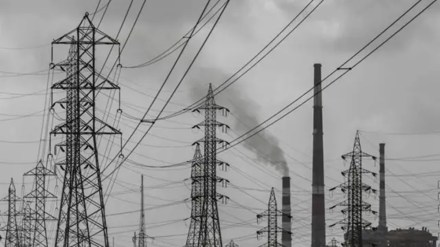By Manish Gupta
For the first time, the state governments disbursed more than 100% of the annual subsidy dues to power distribution companies (discoms) in the fiscal year 2021-22, in sign that the Centre’s coercive tactics, aimed at enforcing discipline among a few states prone to populism, are yielding results.
Non-payment or delays in release of subsidies to the discoms is seen to be the starting point of the vicious cycle of payment defaults in the energy value chain.
Also read: Hot, dry weather plays havoc with Darjeeling first flush tea
As per Power Finance Corporation’s (PFC) latest integrated rating report, the total subisidy booked for the fiscal 2021-22, the latest year for which data is available, was Rs 1.78 trillion, and the discoms received Rs 1.83 trillion, meaning disbursement of more than 102% for the year. Tariff subsidy – subsidised tariffs offered to certain end-customers like farmers and low-income groups – booked by the discoms stood at Rs 1.43 trillion in FY22, while Rs 1.56 trillion was disbursed (109% of booked amount). “Improvement in subsidy disbursal was one of the biggest highlights for FY22,” PFC said in the report.
“I have never seen such high levels of subsidy disbursement by states in my four decades of association with this industry,” said Association of Power Producers (APP) director general Ashok Khurana. He attributed the development to “the series of measures put in by the central government to enforce payment discipline.”
Six states – Tamil Nadu, Maharashtra, Rajasthan, Uttar Pradesh, Andhra Pradesh and Telangana – account for nearly two thirds of discoms’ overdues to gencos. In a series of letters to these and other state governments since the large-scale power outages last summer, the Union power ministry has told them if outages occur in a state which hasn’t paid discoms the subsidy dues, and which is not following financial discipline, then it cannot blame anyone else for the situation.
Subsidy disbursement is a parameter that has been lagging in the distribution sector over several years leading to hefty arrears. Even in the past two years, subsidy disbursement was below par – 95% of subsidy booked in FY20 and 85% in FY21.
Tariff subsidy by the state government forms a significant part of the revenue of discoms. Subsidy arrears have been one of the leading legacy issues that threaten financial viability of the discoms. Build up of stress here is transmitted through the value chain.
Of the 24 states which provide subsidy to discoms, 10 states disbursed more than 100% of subsidy booked (thus clearing some of the arrears), seven disbursed 100%, and five disbursed more than 93% in FY22, the PFC report said. In terms of discoms, of the 42 state-owned discoms that booked subsidy in FY22, 32 reported receiving 100% or more.
To promote greater financial prudence in the sector, the central government launched the Revamped Distribution Sector Scheme (RDSS) in July 2021 to facilitate a reform-oriented and result-based financial support structure to modernise power distribution.
“One of the conditions under additional prudential norms for lending to discoms is that there should not be any dues from the state governments or the state government departments to the discoms,” said Vikram V, vice-president and sector head, corporate ratings, Icra.
Together, states cleared about Rs 12,000 crore of subsidy arrears in FY22, about 15% of the Rs 78,000 crore-outstanding-arrears at the start of the year. While there are still large subsidy arrears, non-tariff subsidy disbursement has remained flat since FY20.
Non-tariff subsidy, representing those under various central or state schemes for helping financially weak discoms like UDAY and liquidity packages under Atmanirbhar Bharat, booked in FY22 was Rs 35 crore and disbursement was Rs 26 crore (75%).
“The issues have been lingering for long. It will take some time but things are on mend now. The Centre means business. If the states do not pay, power starts getting curtailed and the generators can dispose of that power in the market,” Khurana said. While he sees full disbursement of subsidies as a sustainable trend, Icra’s Vikram says only time will tell as each state have their own political priorities.
“It remains to be seen if the more than 100% collection of subsidy dues achieved in FY2022 sustains. While the central government is proposing various reform measures to improve the discom finances, the timely implementation of these measures by the states is key to the success of these reforms,” Vikram said.
